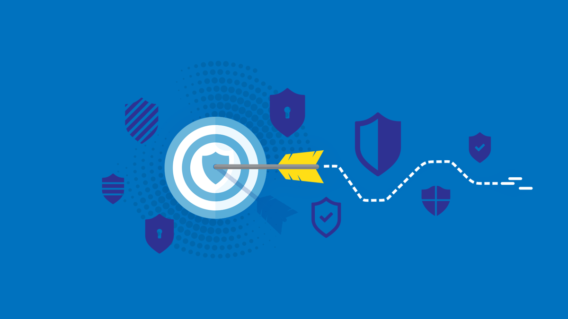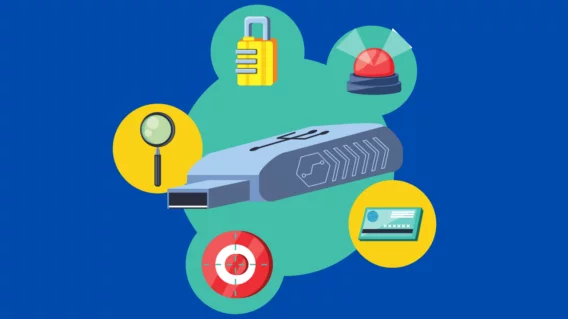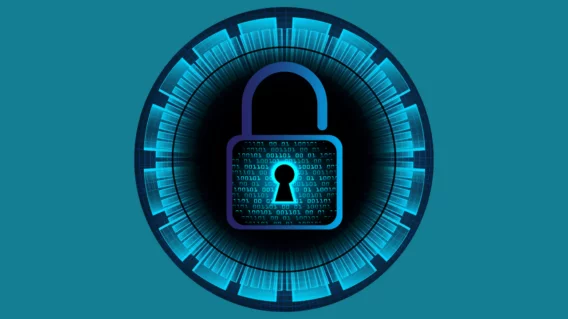13 mistakes to avoid when choosing antivirus software in 2020

With more than a quarter of a million new malicious programs being detected every single day, it’s painfully clear that everybody needs the protection of a good antivirus product.
However, choosing the best antivirus software in 2020 is easier said than done. From barebones products to feature-laden security suites and everything in between, there are so many options on today’s market that it can be difficult to know which antivirus software is right for you.
We want to make things a little easier. To help you narrow down your choices, we’ve rounded up 13 mistakes to avoid when choosing antivirus software. So, sit down, write up a list of potential antivirus products and we’ll show you exactly how you can start weeding out the unsuitable candidates.
You can safely cross the antivirus software off your list if it doesn’t meet the following criteria…
1. Detection rates
When it comes down to it, the most important factor when choosing antivirus software is how well it can protect your system against both known and unknown threats. Given that there are so many vendors that can provide protection rates well above the 95 percent mark, there really is no excuse to go with a vendor that offers substandard security. Be wary of any antivirus software that consistently scores poorly on independent tests (more on this later!) and don’t hesitate to cross repeat offenders off your list.
2. Layered protection
As malware continues to grow more complex, it’s no longer safe to rely solely on a real-time guard that simply scans files for known threats. Instead, look for antivirus software that incorporates multiple layers of protection into its defense system. A web protection component, for example, can be useful for blocking connections to dodgy websites and preventing malware from touching your system. Emsisoft Anti-Malware takes the multi-layered approach to the next level by using dual scanner technology to maximize the chances of detecting and removing any suspicious software, and additionally incorporates a behavior blocker.
3. SSL inspection practice
By mid 2017, more than half of the Internet’s websites had already migrated to SSL, a protocol that ensures all website content transfers are encrypted so that no-one can read the data being sent.
While SSL is generally appreciated by everyone, it does pose an interesting problem for some antivirus vendors, as many products rely on deep inspection of website traffic to check for threats. As SSL is an end-to-end encryption, it’s technically impossible to scan website content, unless the antivirus installs a local SSL proxy that simulates the real security certificates of websites. But doing that is a very dangerous way of using the technology, as things can go wrong – worst case scenario, it could deceive a user into believe a website is safely encrypted when in fact it’s not. Emsisoft proves that web protection can be done without trashing the SSL security concept. DNS based filtering is the way to go, if you’re worried about your SSL security.
4. Behavior blocker
Signature-based scanners are great for detecting known threats (that is, malware that has been seen before), but they’re very ineffective when it comes to dealing with zero day attacks (brand new malware). New outbreaks typically hit the globe within minutes and can potentially infect millions of machines before an antivirus vendor can even think about releasing a signature update.
To combat this risk, some vendors make use of behavior blockers, which are able to sniff out patterns of malicious behavior and intercept offending programs before they can make changes to your system. A good behavior blocker is the only technology that can reliably protect you against zero day threats, and should be a critical factor to consider when choosing antivirus software.
5. Privacy
Check the privacy practices of the AV vendors. Some are extensively collecting data about your computer usage to improve their products. While simple product usage telemetry is usually anonymized, some products may also upload suspicious files from your computer to the vendor’s scanning cloud. You need to be able to fully trust that the vendor will handle your files responsibly, ethically and securely. After all, a private document could be part of such an upload, too. This is particularly relevant for businesses that deal with critically private client data (such as that managed by hospitals and doctors), as well as businesses that fear any type of industrial espionage.
6. False positives
Flagging an innocent program as malicious is known as giving a false positive, and it’s an important metric to think about when choosing antivirus software.
Why?
Well, if your antivirus mistakenly identifies a file as a threat, it will treat it as malicious, which will probably involve quarantining the file or removing it entirely. In many cases, this will harm the functionality of the software the file belongs to and may render the application unusable.
Many antivirus providers get around this by modifying the detection threshold, but this can have the opposite effect and result in a reduced detection rate. Ideally, you want to find antivirus software that strikes the sweet spot between a good detection rate and a low number of false positives.
7. Usability
Excellent protection rates are only part of the equation. While antivirus software doesn’t necessarily have to sport a beautiful UI, it should still be easy to use for both tech-savvy and casual users.
The best antivirus software balances form with function. Look for a product which features a user-friendly interface that’s logical to navigate and includes settings that can be easily tweaked to meet your needs. If your prospective antivirus software includes miles of unintuitive menus and options that can’t be deciphered without multiple trips to Wikipedia, it might be time to cross it off the list.
8. System impact
There’s little point in choosing an antivirus product that boasts the best detection rates in the world if it slows your system to a crawl every time it runs a scan. This is most commonly a problem with products that are poorly optimized and/or come bundled with a bunch of extra ‘features’ that are aimed to bolster security but do little more than hog your system’s resources. Good antivirus software should be sleek, efficient and have little impact on your regular computer use. This means it should be able to complete a scan quickly and won’t impact your PC’s boot time.
9. Features
When comparing antivirus software, you may naturally be drawn to products that come bundled with a full range of seemingly useful bonus features. For example, some security suites will come with a firewall, parental control/content blockers, browser plugins, password managers, cloud-backups and a slew of other security tools. While it may seem like these products are going to provide better protection, it’s important to ask yourself: am I actually going to use these features?
For instance, having a content blocker that restricts children’s access to certain websites probably isn’t necessarily if you don’t have kids, just as backup components are redundant if you already use a third-party backup service. In addition, proprietary firewalls are generally considered to be superfluous these days as the Windows Firewall is now on par with most firewalls from IT security vendors.
In a nutshell, avoid antivirus products that come bundled with components that you’re not going to use. Keep your antivirus software lean, mean and focused to avoid unnecessary bloat.
10. Reviews

Unless you have a particularly strong interest in the antivirus industry, it’s tough to keep up to date with the ins and outs of all the various security solutions on offer. Thankfully, it’s possible to get a pretty good overview of your options by looking at the results of independent antivirus tests and user recommendations.
A number of third-party testing groups such as AV-Comparatives, AV-Test and Virus Bulletin, among others, regularly carry out detailed analyses to find out how IT security products perform when subjected to malware. The results of these tests can reveal a lot of information regarding detection rates and false positive rates – both of which should factor heavily into your decision. When looking at reviews, be sure to double check that it’s an independent (i.e. not paid ranking!) source, so you can be confident that the results are fair and unbiased.
If a product consistently scores poorly on these tests, it may pay to steer clear of it. Alternatively, if the vendor tends to avoid these tests altogether, it’s often an indicator that the product simply doesn’t work as well as their marketing team would have you believe.
11. Support
One often overlooked factor to take into consideration when choosing an antivirus product is the quality of the support team. All too often, a vendor’s support system consists of little more than chatbots, auto email responders and community/customer-to-customer support – none of which is particularly helpful in the event of a crisis. Many antivirus software reviews will include at least a few lines on support, so be sure to read this section carefully before committing to any product. If the product comes with poor support, you might need to think about scratching it off the list.
Here at Emsisoft, we’re proud to offer super-fast, no-strings-attached emergency support, active forums and email support from real people who are passionate about IT security.
12. Price
A quick search will reveal dozens of free antivirus products that claim to be able to compete with the premium options on the market. While these free options might be better than nothing (whether or not they’re better than Windows Defender Antivirus is another topic altogether…), you have to keep in mind one simple truth: there’s no such thing as a free lunch.
In many cases, using ‘free’ antivirus software means you’re paying with your personal data, being subjected to in-app advertisements or inadvertently installing some unwanted bundled software. After all, something has to pay for the development work, servers, company infrastructure and so on.
You don’t necessarily have to rule out free options, just be mindful that the quality of the product and support is usually going to pale in comparison to paid options. You’re probably not going to notice a $40 annual subscription, but you most certainly will notice when a new strain of ransomware encrypts your files and the chatbot support system is spewing out nonsensical scripted answers.
13. Free trial
Reading reviews and independent tests are a fantastic way to get expert insight into an antivirus product, but even a perfect score doesn’t necessarily mean the software is going to be exactly right for you. People have different needs and preferences, which means the user experience is always going to be somewhat subjective.
With this in mind, the best way to come to terms with an antivirus product is to install a free trial yourself and have a play around with it to see if it’s well suited to your needs. Ideally, the trial should offer full functionality to give you a realistic experience. If you don’t have time to install and trial a bunch of different antivirus software, check out video reviews on YouTube to see how the product looks in a real world environment and how they perform with random malware samples.
Choosing the best antivirus software in 2020
Through a process of elimination, hopefully you’ve been able to cut down your list of prospective antivirus software to a few strong candidates. If you’re in the market for a lightweight antivirus software that offers stellar protection, excellent customer service and great usability for users of all technical levels, be sure to download your free trial of Emsisoft Anti-Malware.
Emsisoft Endpoint Protection: Award-Winning Security Made Simple
Experience effortless next-gen technology. Start Free TrialHave an outstanding (malware-free) day!


